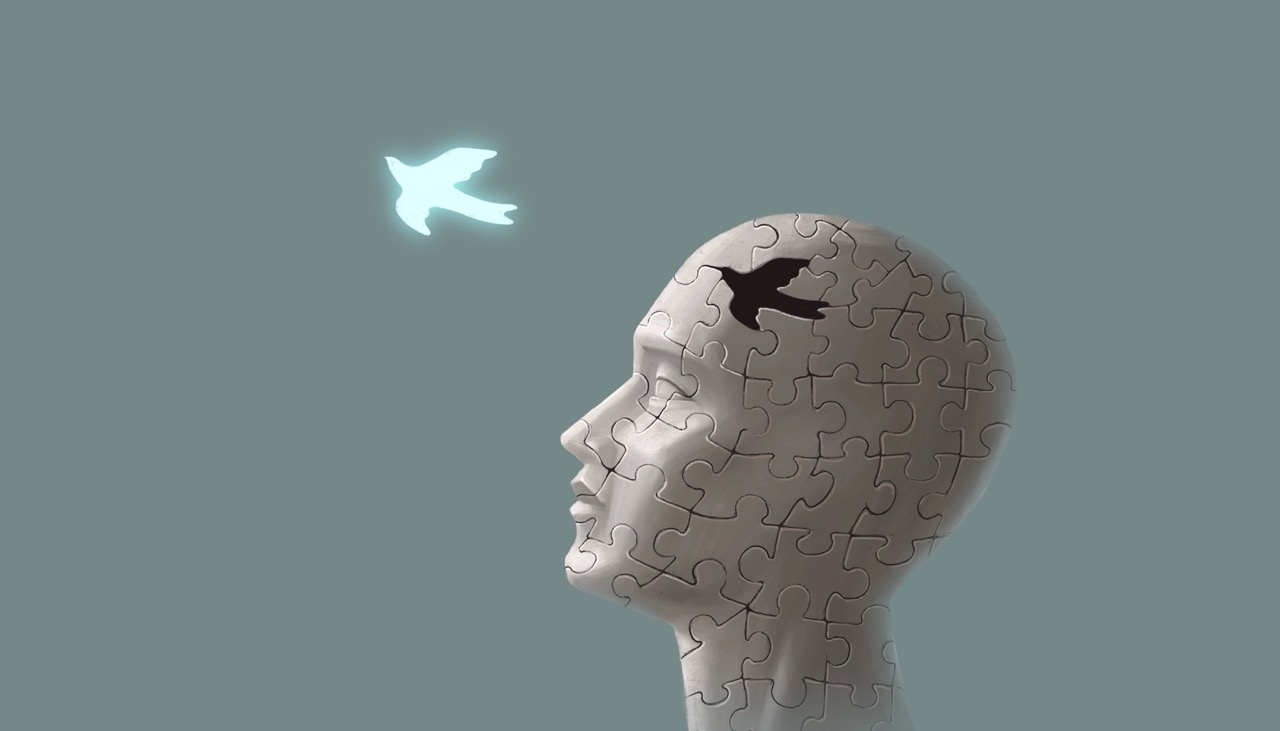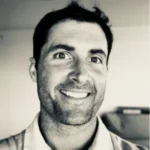Healing Without Closure
We long for resolution. It’s in our nature to seek certainty, to crave a moment when everything painful is neatly tied up, no longer lingering in the corners of our minds. From childhood, we are taught that every story has an ending—one where conflicts resolve, wounds heal, and life moves forward without looking back. Movies, books, and television reinforce this idea, shaping our expectations that healing should come with a sense of closure, a finality where pain no longer touches us.
But real life doesn’t conform to this narrative.

The Illusion of a Perfect Ending
The idea that we can permanently seal away emotional wounds is a comforting illusion, but an illusion nonetheless. Healing isn’t about erasing what happened or reaching a point where the past no longer affects us. It’s about learning how to carry our experiences with us, not as burdens, but as part of the larger story of who we are. [1]
Why Closure Isn’t the Goal
Memories and emotions do not disappear just because we have acknowledged them. Healing is not about neatly closing a chapter and never looking back. It is a continuous process that shapes who we are over time. Painful moments may resurface even when we believe we have made peace with them. This is not failure. It is not weakness. It is simply part of being human.
Many believe healing means reaching a point where pain no longer touches them. They think that if sadness, anger, or fear still arise, they must not have healed fully. But this expectation creates an impossible standard. Healing is not about eliminating pain. It is about learning to navigate it. When grief resurfaces, we can acknowledge it without being overwhelmed. When fear stirs, we can recognize it without letting it control us.
Like the ocean, the mind has its own tides. Memories ebb and flow, some gentle, some crashing like waves. Suppressing them is like trying to hold back the sea. Instead, we learn to move with the current, trusting that no matter how deep the tide pulls, we can regain our footing.
We are not meant to be untouched by our past but to carry it differently, with less burden and more grace. Healing is not about closure, as if pain can be locked away and forgotten. [2] It is about integration, allowing our past to exist alongside our present without overshadowing it. And that is far more powerful than closure could ever be.
When Pushing Pain Away Becomes Survival
In extreme situations, suppressing pain is not just an instinct. It is a survival mechanism. When someone is trapped in ongoing trauma, the mind may shield them from overwhelming emotions to help them endure. [3] This process, known as dissociation, allows a person to mentally detach from unbearable pain, creating distance from their own experience. In the midst of abuse, neglect, or violence, dissociation can mean the difference between emotional collapse and survival.
For a child facing repeated trauma, dissociation may become a mental escape, a way to feel as though the pain is happening to someone else. For an adult in an abusive relationship, it may take the form of numbness or emotional detachment, making it easier to go through daily life without breaking under the weight of fear. In the moment, this protective mechanism can be life saving. [4]
However, once the immediate danger has passed, dissociation can linger and no longer serve its original purpose. The same walls that once provided protection can now create disconnection from emotions, relationships, and even a sense of self. Memories may feel fragmented, emotions may seem distant, and healing may feel out of reach. What was once a survival strategy can become a barrier to recovery.
The past cannot be undone, but its grip on the present can be loosened. Not through forgetting, but by facing it with strength and self compassion.
Two Short Stories of Healing Without Closure
These two stories show that true healing is not about erasing pain but moving forward without needing closure.
Frank: Living with Loss
Frank, now 40, lost his father at a young age. He never got the chance to ask him about his values, his dreams, or his vision for life. Every year on the anniversary of his father’s death, Frank feels the weight of that absence. The grief resurfaces, reminding him of the conversations they never had.
But through his own healing journey, Frank has learned to carry that loss without letting it define him. Instead of feeling burdened by his father’s absence, he chooses to focus on his own growth; his accomplishments, his relationships, and his ability to love. Though he still wishes his father were here, he finds gratitude in his own life. Each time he steps into the sunlight, he takes a deep breath and embraces the moment.
Why Frank’s healing does not depend on closure
Frank’s grief remains because loss has no final chapter. His father’s absence is permanent, but healing is not about erasing pain. It is about carrying it without letting it overshadow his life.
Closure implies an end to grief, but loss does not work that way. Instead of seeking resolution, Frank has learned to live alongside his pain. He focuses on what he can build (his achievements, relationships, and capacity to love) rather than what he lost.
Healing is not forgetting. It is reaching a place where grief exists without defining everything else. Each time Frank steps into the sunlight, he chooses life.
Three ways to cope with loss without closure
- Honor Their Memory – Journal, visit a special place, or continue a tradition they loved.
- Control What You Can – Focus on meaningful actions and connections in the present.
- Let Grief Move – Accept its ebb and flow without judgment. Some days will be heavier than others.
Mary: Reclaiming Her Life
Mary, now 35, grew up in a violent home. Mary’s step-father molested her when she was only nine years old. She longed for her stepfather to protect her from her mother’s abuse, but instead, he betrayed her trust in an even deeper way. She remembers wanting to end her life and screaming in the middle of the night from night mares. The trauma followed her into adulthood. She was afraid of men, sabotaged relationships before they got too close, defied authority, and struggled to trust anyone.
At 14, she ran away to her aunt’s house, where she finally found stability. With her aunt’s support, she was able to go to college and eventually became a social worker, determined to help others facing similar struggles.
The molestation affected her intensely. For years, Mary lived with the effects of her trauma. But she was fortunate to find a therapist who helped her understand her pain, express her anger in a healthy way, and set high expectations for herself. While certain triggers remain, like seeing a man who resembles her stepfather, she has learned how to shift from panic to calm. She has discovered an inner sense of safety and strength. More often than not, she catches herself smiling. And for the first time, she truly enjoys connecting with others.
Why Mary’s healing does not depend on closure
Mary’s past will always be part of her, but healing is not about erasing what happened. She carries the scars of her childhood, yet she has learned that survival is not about forgetting. It is about reclaiming her life and choosing how to move forward.
Closure implies that the past can be sealed away, but trauma does not disappear on command. The memories still surface, the triggers still exist. What has changed is Mary’s response. She no longer feels trapped by her past. She recognizes her strength, her ability to set boundaries, and her power to create a life she controls.
Healing is not about undoing the past. It is about finding safety within herself. [5] Mary is no longer defined by what was done to her. She has built something beyond survival; a life where she is in charge, where she feels joy, and where her past does not dictate her future.
Three ways to cope with trauma without closure
- Develop Grounding Techniques – Use deep breathing, counting objects, or holding a comforting item to stay present during triggers.
- Redefine Safety – Surround yourself with supportive people and set boundaries to protect your well-being.
- Acknowledge Progress – Healing is about movement, not perfection. Celebrate small wins, like feeling at ease in once-triggering situations.
Healing Is a Journey, Not a Destination
We do not choose the experiences that shape us, but we choose how we carry them. Over time, what once felt unbearable becomes something we can hold with greater ease. The past remains, but it does not have to define us. Healing allows us to move forward, not by forgetting, but by recognizing our own strength, our ability to love, and our capacity to live fully despite what we have endured.
Memories will resurface—some as whispers, others as crashing waves. This does not mean we are broken or have failed to heal. It means we are human. True healing is not about eliminating pain but about meeting it with understanding, self-compassion, and resilience.
Editor’s Note: Are you or someone you know facing mental health challenges? Visit our mental health network to connect with therapists and find support for improved wellness. For emergencies, visit 988lifeline.org for immediate assistance.
- “Birth Cohort Study Reveals the Mental Health Burden of Trauma in Childhood.” University of Bath, 1 Nov. 2022, https://www.bath.ac.uk/announcements/birth-cohort-study-reveals-the-mental-health-burden-of-trauma-in-childhood/. Accessed 10 Feb. 2025.
- “Coping With Traumatic Events.” National Institute of Mental Health, May 2024, https://www.nimh.nih.gov/health/topics/coping-with-traumatic-events. Accessed 10 Feb. 2025.
- Masedo, Ana I., and M. Rosa Esteve. “Effects of Suppression, Acceptance and Spontaneous Coping on Pain Tolerance, Pain Intensity and Distress.” Behaviour Research and Therapy, vol. 44, no. 12, 2006, pp. 1831–1844. PubMed, https://pubmed.ncbi.nlm.nih.gov/16569396/. Accessed 10 Feb. 2025.
- Černis, Emma, Robin Evans, Anke Ehlers, and Daniel Freeman. “Dissociation in Relation to Other Mental Health Conditions: An Exploration Using Network Analysis.” Psychological Medicine, vol. 51, no. 2, 2021, pp. 273–282. PubMed Central, https://pmc.ncbi.nlm.nih.gov/articles/PMC8039185/. Accessed 10 Feb. 2025.
- Purcell, Natalie, Brandon J. Griffin, Kristine Burkman, and Shira Maguen. ““Opening a Door to a New Life”: The Role of Forgiveness in Healing From Moral Injury.” Traumatology, vol. 25, no. 1, 2019, pp. 79–87. PubMed Central, https://pmc.ncbi.nlm.nih.gov/articles/PMC6203131/. Accessed 10 Feb. 2025.
Our Medical Affairs Team is a dedicated group of medical professionals with diverse and extensive clinical experience who actively contribute to the development of our content, products, and services. They meticulously evaluate and review all medical content before publication to ensure it is medically accurate and aligned with current discussions and research developments in mental health. For more information, visit our Editorial Policy.
MentalHealth.com is a health technology company guiding people towards self-understanding and connection. The platform provides reliable resources, accessible services, and nurturing communities. Its purpose is to educate, support, and empower people in their pursuit of well-being.
Bob Livingstone is a Licensed Clinical Social Worker who works in private practice. He writes about wellness, personal development, and abuse.
Dr. Jesse Hanson is a somatic psychologist with a PhD in Clinical Psychology and 20+ years of neuropsychology experience.
Our Medical Affairs Team is a dedicated group of medical professionals with diverse and extensive clinical experience who actively contribute to the development of our content, products, and services. They meticulously evaluate and review all medical content before publication to ensure it is medically accurate and aligned with current discussions and research developments in mental health. For more information, visit our Editorial Policy.
MentalHealth.com is a health technology company guiding people towards self-understanding and connection. The platform provides reliable resources, accessible services, and nurturing communities. Its purpose is to educate, support, and empower people in their pursuit of well-being.


